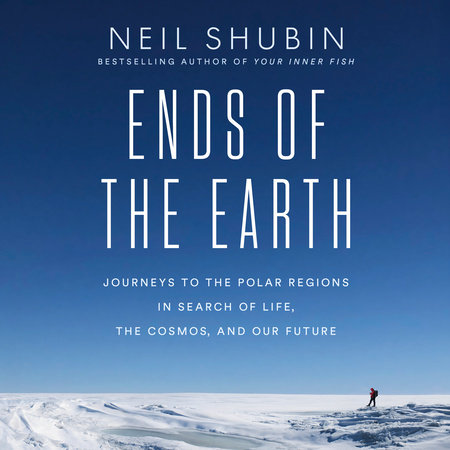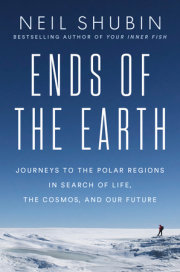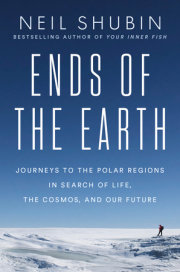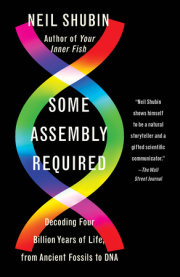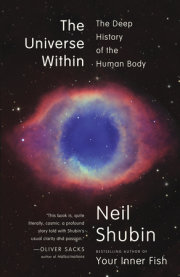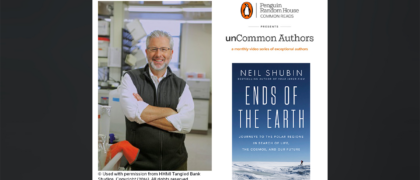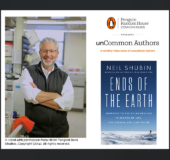Chapter 1
Ice Is Hot
Strapped to the netting inside an Air Force LC-130-a whale-shaped Cold War-era propeller plane that is older than virtually all of its passengers-it is hard to escape the fact that working in Antarctica is 180 degrees different from working in the Arctic, both literally and figuratively. In 2018, our eleven-hour flight to McMurdo Station began in Christchurch, New Zealand, where we had spent two days receiving extreme-weather clothing and getting introduced to the U.S. Antarctic Program. I was one of thirty passengers, all of whom were wearing the program's iconic parka, known affectionately as Big Red. Big Red is a warm home away from home in the field, a giant blanket of a coat with enough pockets to lose small items for an entire field season. Now, Big Red was our survival gear in case the plane crash-landed on ice during the flight over the rough seas of the Southern Ocean.
Donning earplugs to deaden the propeller noise, sitting at a distance from my neighbors because of Big Red's girth, it was nearly impossible to hold a conversation. I gleaned from shouts that my colleagues on the flight included ice drillers, fire-safety personnel, and research scientists. Working in the Arctic, something that felt so extreme in the early days, now seemed like a quaint family camping trip. Antarctic fossil hunting would be more akin to a military operation.
As we deplaned the LC-130, the hatch felt like a portal to a new existence: from the dark confines of the belly of the plane we emerged into a cold, dry, and searingly bright world. Southern polar rookies like me savored our first lungfuls of Antarctic air and wandered around the ice landing strip relishing new vistas while the staff tried to herd us into the transport to the base. Slipping on the hard-packed ice, I soon realized I would need to learn new ways of walking, living, and working in this environment. I'd spent my career thus far primed to look at rocks for fossils. But in Antarctica, there was a new factor to consider in the field. The southern polar region rises thousands of feet above sea level. Antarctica is a continent and does not have relatively warm ocean waters penetrating its interior the way much of the Arctic does. Consequently, Antarctica is colder, windier, and drier-and most important, icier-than the Arctic. The U.S. Antarctic Program calls the time in Antarctica being "on the ice" when on base or in the field. Whether preparing at home, training at the station, or sleeping in a tent in the field, Antarctic work is defined by a relationship with ice.
Humanity's experience with glacial ice, whether on mountaintops or at the poles, is a story of adventure, tragedy, and scientific observation. For most of us, familiarity with ice derives from encountering patches or pieces of it-skating rinks in winter and cubes in summer drinks. These experiences can hardly prepare you for the workings of ice the size of small towns or even entire continents.
The Beauty of Water
Being on an American expedition in Antarctica often means spending time at McMurdo Station, the largest scientific outpost on the continent. Mactown, as the locals call it, sits on an active volcano, while its airstrip lies atop a shelf of ice that borders the base. Known as the Ross Ice Shelf, it is as large as the Mediterranean Sea and is nestled between mountain ranges on one side and smoking volcanoes on the other. The rocks around McMurdo are dark basalts, cooled magma bombs that were ejected from the volcanoes in years past. The location of the airstrip has had to creep farther from the station in recent years as climate warming thins the ice below it.
Since the ratification of the Antarctic Treaty in 1959, seventy scientific bases have been constructed in Antarctica by twenty-nine different countries. The total population of the continent never exceeds 4,000 people. McMurdo is one of three bases run by the U.S. Antarctic Program. It houses over 1,000 people in the height of summer and about 300 in winter. The South Pole Station is 900 miles away and sits at an altitude of 10,000 feet. A big summer event for scientists and staff at the pole has been the Round the World Run-nerd humor for a kilometer-long costumed jog or ride around the globe done in subzero temperatures. Each country's base becomes its own world with a distinctive culture. The food options on French and Italian bases-from pâté to risotto-are as different from McMurdo's meatloaf, pizza, and nachos as are the field gear and extreme-weather clothing donned by researchers. American researchers in Big Red look like five-year-olds on their first sledding trip when compared to the New Zealanders in their slick black-and-green parkas.
McMurdo is the port of entry for most expeditions on the ice, and it feels like a waystation similar to the fictional Mos Eisley spaceport in Star Wars or Rick's Café from Casablanca. The entire population is temporary: those in transit to field sites, such as me and my team, interact with people who are on base for six months or more and maintain and support its operations. Many people are waiting for flights into the field, others for flights home. Each year, several expeditions get stuck on the base for months, or never get into the field because of equipment failures or weather changes. Some arrive in McMurdo only to find their entire scientific project scuttled because a part for an experiment didn't arrive or the weather where they want to work is too forbidding.
Ice was my silent partner on base-I saw it from the panoramic windows of the science library. I'd trained in the base's hangars to camp and live on the ice, but I wasn't allowed to actually be on it until all our gear was checked and we were certified to go into the deep field. I spent weeks walking around McMurdo with a clipboard, taking notes on topics ranging from snowmobile maintenance to environmental safety. While I checked and rechecked field lists of equipment, food, and supplies.
Bad weather had backed up flights into the field, and the population of McMurdo swelled to the point where finding a seat in the cafeteria at dinner became a minor expedition itself. One evening I found an empty spot at a table with a mix of glaciologists and ice drillers engaged in an animated conversation. One of the scientists was ruminating on how the delayed work on the West Antarctic Ice Sheet was going to reshuffle their plans. His easy demeanor was as captivating as his knowledge of glaciers, so I hung around to chat after we finished our meal.
Sridhar Anandakrishnan trained as an electrical engineer in college in preparation for a career designing equipment for scientific research. He settled at the University of Wisconsin to pursue his engineering degree, but lacking any financial support, he was stuck looking for a job to get him through the summer months. A roommate scanning the newspaper had found an ad for work in the geology department designing and building a portable seismometer to measure movements of the ground's surface in remote field locations. Lacking any other opportunities, Sridhar took the summer gig. After Sridhar built the gadget, the lab's leader came to him with a proposition: Could he join his team for an expedition on the ice in Antarctica? The group wanted to use Sridhar's seismometer, but because he knew the details of its construction intimately, he was the only one who could repair it if something went wrong.
Sridhar describes the moment he stepped foot on Antarctica as "the end of the story." He was hooked on polar research and was set on a new path in life. Shifting fields, from engineering to ice, Sridhar needed to take a crash course in geology. But it all paid off when he found himself going into the field and learning about the ice firsthand. Working on the ice was an intellectual and visceral thrill for Sridhar. He gleams as he says, "Where else can you learn about our world while living in a camp eight hundred miles from the nearest humans?"
By the time I met him at dinner, Sridhar had become a professor at Penn State University and had worked for more than thirty seasons on glaciers in Antarctica and Greenland. He specializes in using high technology to probe into the ice and explore its interaction with the ocean waters and bedrock below. As I got to know him, I became more comfortable asking naïve questions. Seeing my ignorance about the complexity of glacial ice, Sridhar smiled and casually observed that I need to understand that "ice is hot."
Sridhar's glaciological Zen koan explains what is so weird and important about ice. The physics of water molecules underlies much of our world. Water is an unusually important substance because it exists as a solid, liquid, and gas within a relatively narrow range of temperatures. Obviously ice near water's freezing point of 32 degrees is not hot by any measure of temperature. But because of the physics of the molecule, ice is hot in terms of the temperature required to melt it into a liquid. A steel bar melts at a temperature of roughly 2,300 degrees Fahrenheit. Steel needs to be heated to extreme temperatures to go from a solid to a liquid, let alone a gas. Meanwhile, the melting point of ice, at 32 degrees Fahrenheit, means that in natural settings it is much closer to the transition from its solid to its liquid state than a material like steel. Only a slight change in temperature is needed to shift the water from a solid to a liquid. And because pressure and temperature are related physically, ice under pressure melts at an even lower temperature. Ice lining the bottom of a glacier sits at such high pressure that it is right on the cusp of melting.
The fact that "ice is hot" spawned one of the most vicious scientific debates of all time. Far from being an esoteric academic feud, this conflict illuminates the surprising things ice can do.
Louis Rendu, Bishop of Annecy in France, developed interests in both the creator and the glacial ice in the mountains near his home at the border of Switzerland. In 1840, after cogitating about glacial movement and looking at the shapes of the glaciers near his home, Rendu supposed that glaciers moved like a lump of honey on an incline. As a viscous substance, honey stretches and deforms as it descends, spreads, and follows the general topography of the surface over which it flows. Using this analogy, Rendu believed that glacial ice fills valleys and all the nooks and crannies inside as it spreads. Bishop Rendu published his idea in a treatise titled Theorie des Glaciers de la Savoies, and noted that glaciers have "some sort of extensibility" and "may move like soft dough." In 1841, the physicist James Forbes was told of Rendu's theory and essentially popularized it by announcing his own "viscous or plastic theory of the movement of glaciers."
Entering the conversation next was Lord Kelvin (born William Thomson), who later became famous for his discoveries in physics, including thermodynamics. He worked with his brother on theories of glaciers. They noted that at high pressures ice can melt at lower temperatures than normal. This meant that the ice at the depths of a glacier, which sits at high pressure, could melt into liquid water despite being cold. The liquid at the base could serve as a lubricant between the ice above and rock below, enabling the entire glacier to glide over the bedrock. Melting will happen anywhere in the glacier where ice sits at high pressure. The interior itself can melt and break apart, and the different parts of the glacier move downhill at different rates. The brothers envisioned that glaciers don't move as a single block of ice-with different parts of its interior melting as it sits under pressure-ice could crack and flow downhill, and different pieces could fuse as they came back into contact and refroze.
The physicist John Tyndall, a fiery Scot, was as attracted to Lord Kelvin's approach as he was utterly appalled by that of Rendu and Forbes. It didn't hurt that Tyndall also held a deep and long-lasting antipathy to Forbes. By the time Tyndall became interested in glaciers, he had already attacked Forbes's theories on other topics-even one on, of all things, musical instruments. Tyndall never lost an opportunity to savage Forbes and make him look like an incompetent fool. Turning to glaciers, Tyndall thought Forbes's use of the term "viscous" wildly off base. To him it was obvious that glaciers didn't move as a viscous, honey-like substance-they cracked, slid over melting waters at their base, and fused again anew as Lord Kelvin suggested.
In retrospect, Rendu, Forbes, Kelvin, and Tyndall were each correct to some degree. Glacial ice, it turns out, can do it all. It is not one thing-it is many things. Part solid, part liquid, and part plastic, glacial ice can slide, bend, ooze, melt, and refreeze. Whenever there is liquid water, strange things can happen. With ice at pressure becoming liquid water, parts of a glacier can move relative to other parts like a thick gel. Glaciers can flow around obstructions by splitting like a river around a boulder, or deep layers can be pushed to the surface.
Polar landscapes have captivated humans for millennia with their varieties of ice. It's been said famously that Inuit have around fifty-two words for ice and snow. While the specific number of words in that claim is controversial, the Inuktitut language uses varied combinations of words and phrases to describe ice's shape, form, strength, and usefulness for traveling, cooking, or hunting. Polar ice can take almost infinite shapes as it crystallizes, moves, and melts. The area around McMurdo Station exhibits this diverse world of ice in microcosm. The mountain ranges near McMurdo look like a dessert that would have pleased Rendu; the ice covers the mountains like a pure white syrup, filling canyons and valleys as it flows. Elsewhere ice looks like glass that has shattered into shards, strips, or chunks ranging in size from a small car to an entire skyscraper. The nearby sea is covered by ice that looks like a layer of foam at one time of year, a quilt of polygons at another, and a folded blanket at still another. Part of the awe of seeing a polar vista comes from imagining how a chemical formula as simple as H2O can underlie worlds of shape and movement that are almost magical in their variety.
Ice comes in structures as different as individual crystals and sheets the size of North America. Hidden within this complexity are secrets to the ways it sculpts landscapes and changes our entire world.
Copyright © 2025 by Neil Shubin. All rights reserved. No part of this excerpt may be reproduced or reprinted without permission in writing from the publisher.

